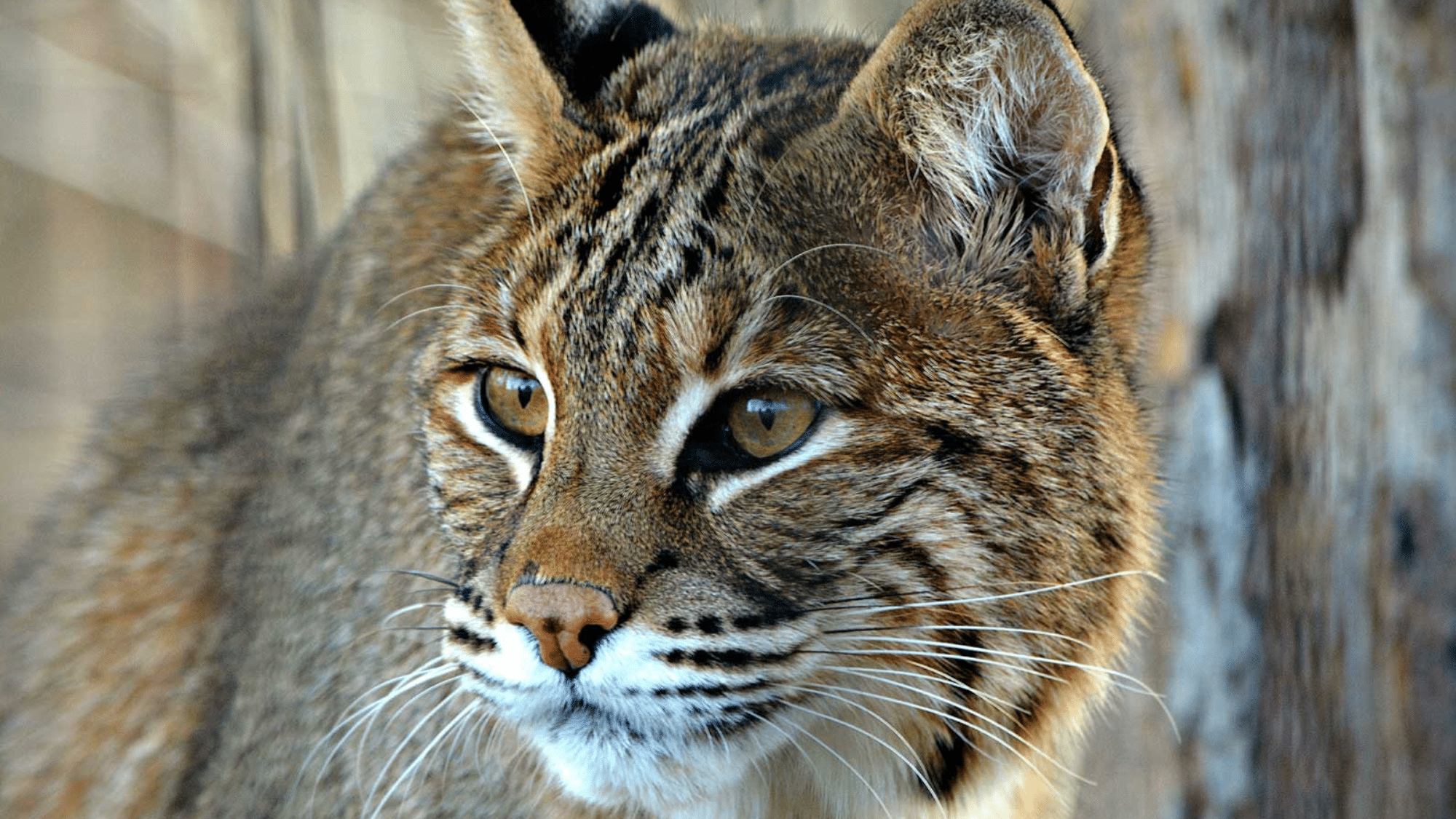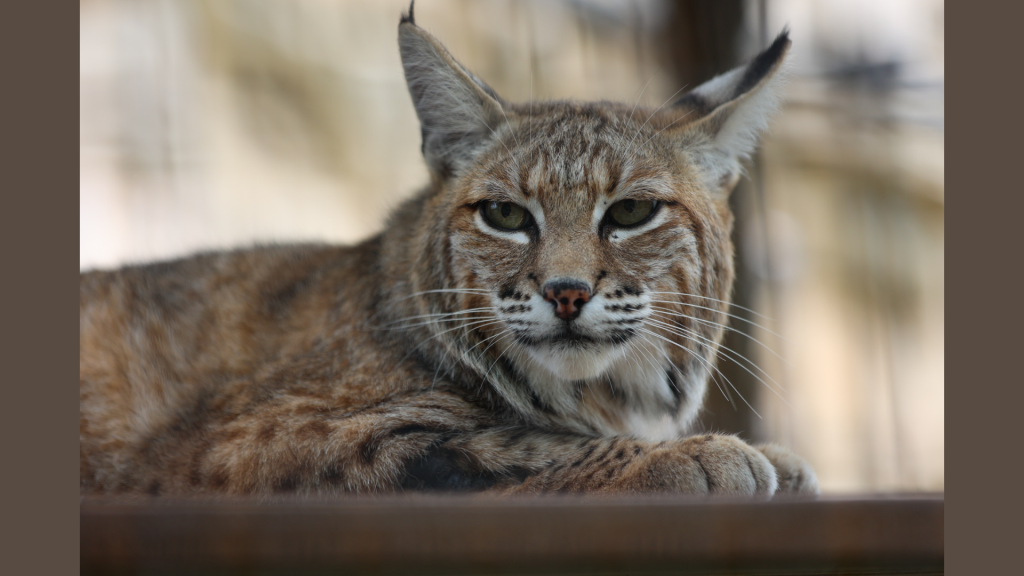Bobcats are wild cats that know how to adapt to challenging environments. From thick forests to deserts, they’ve got some pretty awesome tricks. These animals aren’t just fast or strong, they’re smart, too.
Every part of their body, from their sharp claws to their short tails, helps them live and hunt in the wild.
Whether it’s sneaking up on prey or staying hidden from danger, bobcats have some seriously cool features that make them natural survivors.
However, this blog breaks down their key adaptations and explains what makes these wild cats so good at doing their thing quietly, efficiently, and impressively.
Quick Facts About Bobcat
| Category | Details |
|---|---|
| Common Name | Bobcat |
| Scientific Name | Lynx rufus |
| Size | 26–41 in (66–104 cm) long, 11–30 lbs (5–14 kg); males slightly larger |
| Diet | Carnivore — eats rabbits, squirrels, birds, deer, and rodents |
| Reproduction | Breeds Jan–June, 2-4 kittens/litter, raised in dens, stay with mom 9–12 months |
| Lifespan | 10–12 years in the wild |
| Human Interaction | Once threatened in Illinois, now recovered due to conservation efforts |
Bobcat Adaptations for Survival
Here are some key adaptations that enable bobcats to adapt to their environment and grow under challenging conditions.
1. Physical Adaptations
Bobcats have strong legs, built for climbing and jumping, which help them move easily through forests and rocky areas.
Their short, bobbed tail helps with balance. A spotted coat blends effortlessly with trees and brush, providing excellent camouflage.
Sharp claws retract to stay sharp for hunting and climbing. Their pointed teeth are perfect for tearing meat.
And, their keen eyesight and hearing help them detect the smallest movements, even in low light, making them excellent nighttime hunters.
2. Behavioral Adaptations
They are mostly nocturnal, which means they stay active at night when it’s cooler and quieter. They prefer to live alone, which reduces food competition and makes them safer from predators.
These animals mark their territory using scent and scratch marks to avoid unwanted encounters. They’re also very quiet and stealthy when they move, which helps them sneak up on prey.
These behaviors help them survive in the wild with minimal conflict and maximum success.
3. Diet and Hunting Adaptations
Bobcats are skilled hunters with sharp senses and fast reflexes. They don’t chase down their prey. Instead, they stalk quietly and strike with a sudden pounce.
Their strong jaws and sharp teeth are perfect for catching and eating meat. Bobcats mostly eat rabbits, rodents, and birds, but they can also take down larger animals like deer.
They adjust their diet based on what’s available, making them flexible feeders. This helps them survive in different seasons and environments.
4. Den Adaptations
Dens adaptions play a major role in a bobcat’s survival strategy. These wild cats don’t build dens—they find them.
A good den offers safety, warmth, and privacy, especially during the breeding season. Bobcats often choose spots like hollow logs, rock crevices, brush piles, or thickets as their main dens.
A single bobcat might use several dens within its territory, rotating between them to stay hidden and avoid leaving a scent trail.
These den sites are critical, not just for shelter, but also for protecting the next generation of bobcats.
5. Adaptations for Raising Young
Bobcat mothers are extremely protective and raise their kittens in hidden dens, which are often found in hollow logs or thick brush.
These locations keep the young safe from predators. Kittens are born blind but quickly grow and learn survival skills from their mother.
Later, she teaches them how to hunt before they leave on their own after 9 to 12 months. The mother’s careful planning and strong parenting skills give the kittens the best shot at surviving in the wild.
How Bobcats Change with The Seasons

Bobcats adjust their behavior, fur, and activities with the seasons to remain proficient at hunting and survive throughout the year.
Winter Adaptations:
- Thicker, denser fur helps bobcats stay warm in cold temperatures.
- Grayer coat color improves camouflage in snowy or barren surroundings.
- Increased daytime activity enables them to capitalize on the limited warmth and daylight available during the winter months.
Summer Adaptations:
- More nocturnal behavior helps them avoid hunting during the heat of the day.
- Resting in shaded, cooler spots, such as thick brush or rocky dens, helps regulate their body temperature.
- A flexible diet enables bobcats to adapt to the fluctuating availability of prey during warmer months.
Some Interesting Facts About Bobcats
Here are some super cool facts that highlight the unique traits and behaviors of bobcats in their natural environment.
- The name “bobcat” comes from their short, “bobbed” tail, which is only about 4–7 inches long.
- A bobcat can leap up to 10 feet in a single bound, which is perfect for catching prey or escaping danger.
- Bobcats usually stay silent, but when they do make noise, it can sound like a woman screaming.
- Despite their small size, bobcats have been known to kill animals that are up to eight times their own weight.
- Their spotted coats aren’t just stylish, they help bobcats blend into their surroundings, making them nearly invisible.
- Bobcats can’t roar like lions, but they make a range of sounds: hisses, growls, grunts, yowls, and even purrs.
- Unlike other wild cats, bobcats are native only to North America, from southern Canada to Mexico.
From their unique coats and powerful legs to their sharp hunting skills and strong parenting instincts, every trait contributes to their success. Moreover, their different behaviors and features make it easy to see why bobcats continue to capture attention and respect.















